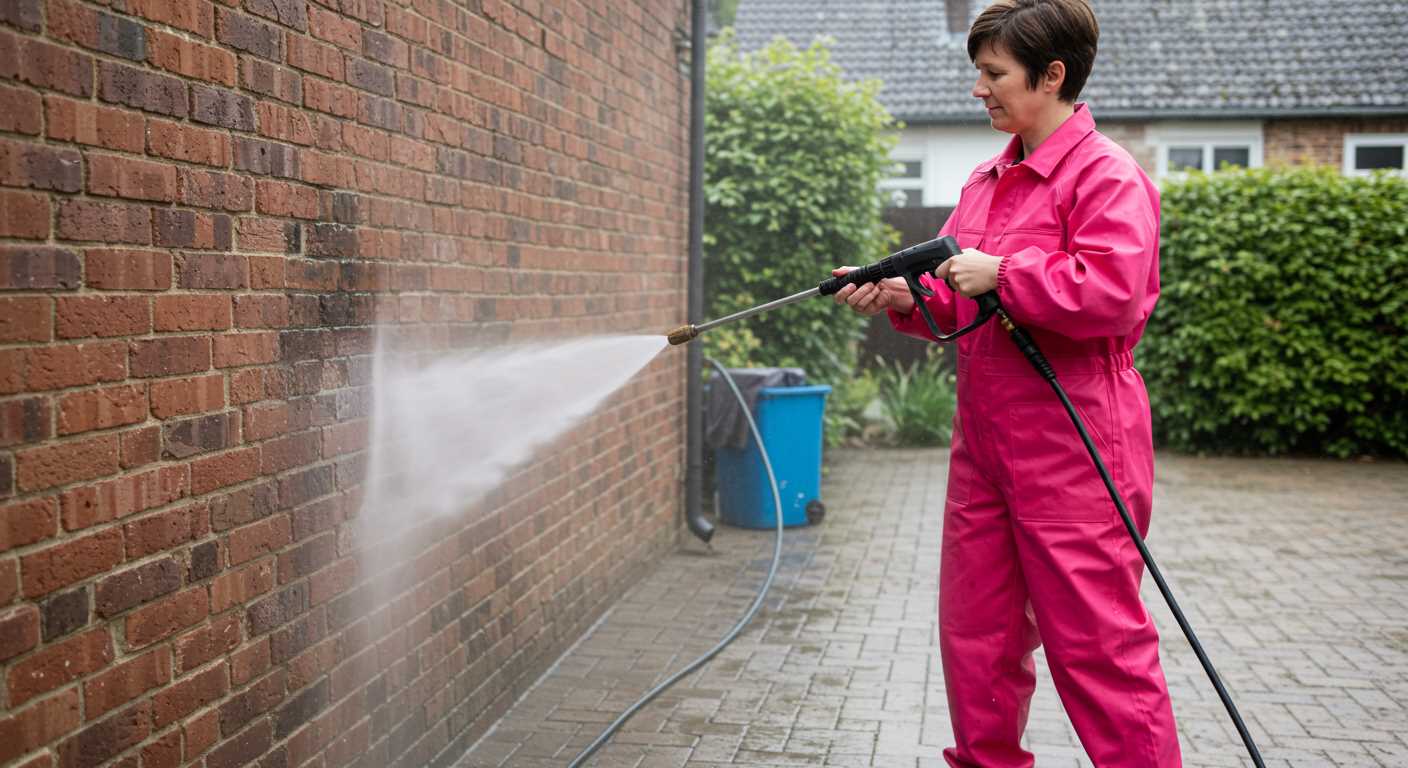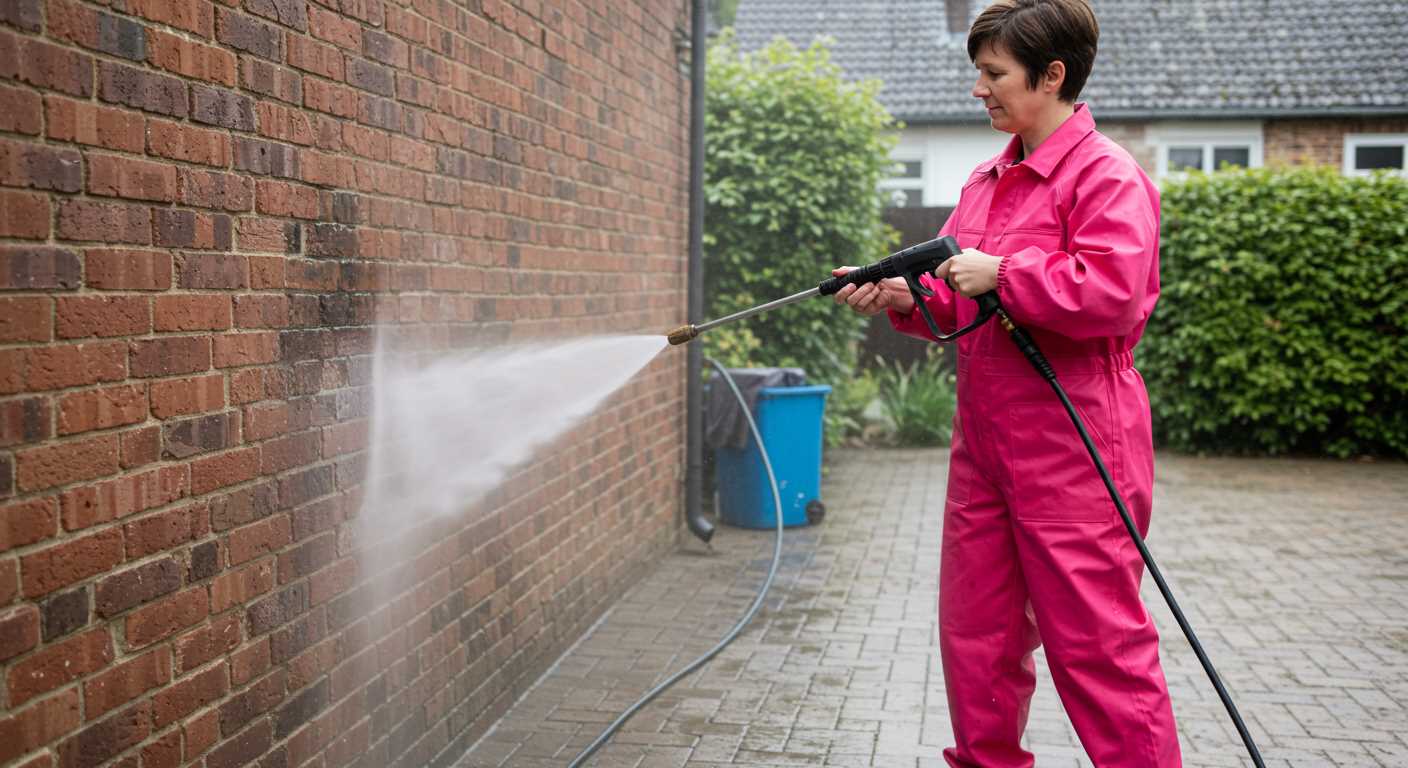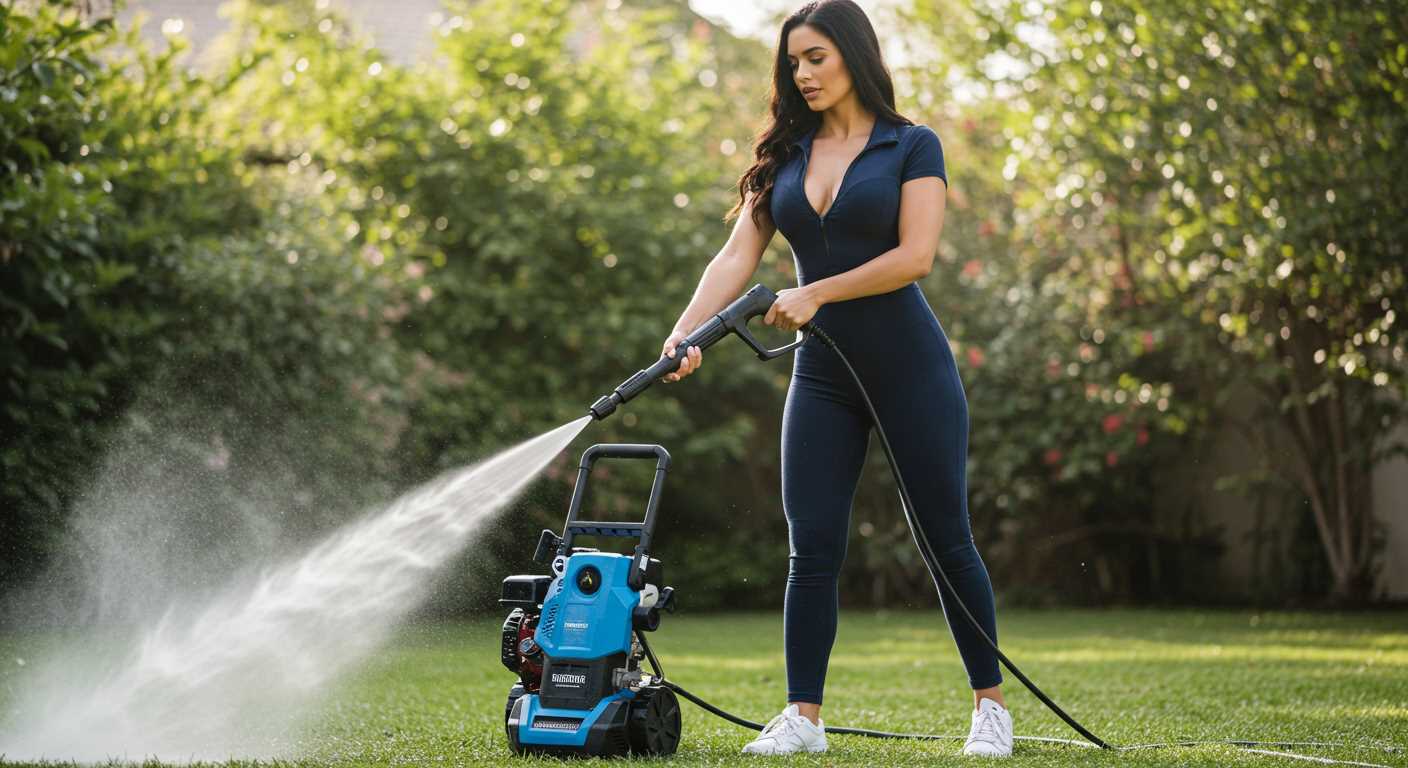




Absolutely, addressing issues with a high-pressure cleaning unit’s pump is often feasible. In my extensive experience working with various models, I’ve encountered numerous instances where minor malfunctions could be resolved with straightforward solutions. For instance, if you notice a loss of pressure or irregular water flow, the first step is to inspect the intake filter and hoses for blockages. Cleaning these components can restore optimal performance without needing to replace the entire system.
Another common issue arises from worn-out seals or O-rings. During my time in the industry, I often found that a simple seal replacement could revive a unit that seemed beyond hope. The process usually involves disassembling the pump housing, which can be daunting at first, but with a few basic tools and a careful approach, it becomes manageable. Always ensure you have the correct replacement parts on hand, as using incompatible components can lead to further complications.
Don’t overlook the oil levels in the pump. Insufficient lubrication can lead to overheating and irreversible damage. I’ve seen many owners neglect this aspect, only to face costly repairs down the line. Regular maintenance and checks can prevent these issues and extend the lifespan of the equipment significantly.
In cases of complete failure, it might be tempting to consider a full replacement, but I advise assessing the situation thoroughly. Often, the investment in repairs can save you money compared to purchasing a new unit. Sharing knowledge and experiences with fellow enthusiasts and professionals can also provide insights into effective repair techniques and resources.
Identifying Common Pressure Washer Pump Issues
Start with inspecting for leaks around the unit. A small drip can escalate into a significant problem if ignored. Common leak sources include:
- O-rings: Over time, these seals degrade and may require replacement.
- Pump housing: Cracks or damage here can lead to leaks; check for any visible wear.
- Hoses: Look for punctures or loose fittings that could cause water to escape.
Next, listen for unusual noises during operation. A healthy motor operates smoothly; grinding or rattling indicates internal issues. This could stem from:
- Worn bearings: Regular use can wear them down, leading to noise.
- Loose components: Ensure everything is tightly secured.
- Air in the system: Bleed the lines to remove any trapped air, which can cause rattling sounds.
Monitor the pressure output. A significant drop might stem from:
- Blocked nozzles: Clean or replace as necessary to restore optimal flow.
- Faulty unloader valve: This component regulates pressure; if malfunctioning, it may need adjustment or replacement.
- Worn seals: Check for wear and replace them to maintain proper pressure levels.
Lastly, observe the temperature. If the unit overheats, potential causes include:
- Insufficient water supply: Ensure the intake is clear and that the source provides adequate flow.
- Overworking the motor: Let it rest periodically during extended use to prevent overheating.
- Blocked vents: Clear any debris from air intake points to allow for proper cooling.
For those in need of reliable equipment, check out the best air compressor for cnc machines for additional support in your cleaning tasks.
Tools Needed for Pump Repair
To tackle the job of fixing a high-pressure cleaning unit’s motor, having the right tools is paramount. A good start is a set of screwdrivers–both Phillips and flathead–since you’ll encounter various screws during disassembly. Pliers, particularly needle-nose, assist in gripping and manipulating small components that often hide in tight spaces.
A torque wrench ensures that bolts are tightened to the manufacturer’s specifications, preventing future leaks or damage. Don’t overlook a multimeter; it’s invaluable for diagnosing electrical issues. If you suspect a faulty switch or wiring, this tool will help you confirm suspicions quickly.
Wrenches, especially adjustable ones, are necessary for removing and tightening fittings. A dedicated oil filter wrench might also be useful if you’re dealing with oil-filled models. Keep a set of replacement seals and O-rings on hand, as these components wear out and can lead to leaks if not replaced. A small parts organizer is handy for keeping track of screws and small pieces during the repair process.
Finally, a clean cloth will help manage spills and keep your workspace neat. With these tools, you’re well-equipped to handle most repairs and ensure your unit performs optimally after the job is done.
Step-by-step guide to disassembling the pump
Begin by disconnecting the unit from the power source and removing any attached hoses. Ensure the area is dry and free from any debris to avoid accidents.
1. Remove the outer casing
Using a suitable screwdriver, carefully unscrew and remove the casing. Take note of the screws’ locations as they may differ in size. Place them in a container to prevent loss.
2. Detach the inlet and outlet fittings
Loosen the fittings with a wrench. This step requires a gentle touch to avoid damaging the threads. Once detached, inspect the seals for wear and tear.
3. Access the internal components
With the outer casing removed, locate the internal assembly. Carefully detach the connecting rods and springs. Keep track of their arrangement, as reassembly relies on the original configuration.
As you work through these steps, take photographs or make sketches of each stage. This practice simplifies the reassembly process later. Pay close attention to any unusual wear on components, as this can indicate underlying issues.
4. Remove the pump head
Unscrew the bolts securing the pump head. Gently lift it away, being cautious of any remaining seals. Inspect for damage or blockages that might have caused performance issues.
5. Clean and inspect
Once disassembled, clean all parts with a suitable solvent. Check for cracks, warping, or corrosion. Any damaged components will need replacement before reassembly. Keep everything organised to streamline the process.
After following these steps, you’ll have a clear view of the internal workings. This methodical approach ensures a successful reassembly and enhances the longevity of the machine.
How to Replace Worn Seals and O-Rings
Replacing worn seals and O-rings is straightforward yet critical for restoring functionality. Follow these steps for an effective replacement.
Gathering Necessary Components
- New seals and O-rings: Ensure these match the specifications of your model.
- Lubricant: Use a silicone-based lubricant to ease installation.
- Cleaning cloth: Keep surfaces clean before reassembly.
Replacement Procedure
- Disassemble the unit as described in the earlier guide. Remove the cover to access the internal components.
- Identify worn seals and O-rings. Look for cracks, hardening, or deformation indicating wear.
- Carefully remove the old seals and O-rings using a flat tool, ensuring no debris falls into the assembly.
- Clean the seating area thoroughly with a cloth to remove any residue.
- Apply a thin layer of lubricant to the new seals and O-rings to facilitate a snug fit.
- Position the new seals and O-rings in their respective grooves, ensuring they sit evenly.
- Reassemble the unit, following the disassembly steps in reverse order. Tighten screws to the manufacturer’s specifications.
After reassembly, run the equipment for a short period and check for leaks. This simple maintenance task can extend the lifespan of your device significantly.
Cleaning the Pump Components for Optimal Performance
Regular cleaning of the internal components significantly enhances the functionality of your equipment. After disassembly, inspect each part for residue and buildup. Use a soft brush to remove stubborn deposits; a toothbrush or a similar tool works well for this task.
For a thorough clean, soak the components in a mixture of warm, soapy water. This solution helps dissolve grease and grime effectively. Rinse the parts under warm water and dry them completely to prevent moisture-related issues.
Inspect the inlet and outlet valves carefully. Sometimes, debris can clog these areas, impacting flow and pressure. Use a soft cloth or a small brush to ensure they are free of blockages. Pay special attention to the seating areas where the seals make contact; any dirt here can lead to leaks.
Additionally, consider using a dedicated cleaner designed for cleaning machinery. These products can offer a deeper clean without damaging sensitive components. After cleaning, always inspect for wear and tear, as dirt can exacerbate existing issues.
Once everything is clean, reassemble the components with caution. Apply a small amount of lubricant to the seals and O-rings to ensure a proper fit and prevent future leaks. For those interested in enhancing their cleaning arsenal, check out the snow foam lance for titan pressure washer for an added layer of cleaning efficiency.
Reassembling the Pump: Tips for a Successful Fix
Reassembling the components requires precision. Lay out all parts in the order they were removed. This helps to avoid confusion and ensures that nothing is left out. I’ve made the mistake of mixing up parts before, and it added unnecessary time to my repairs.
Aligning Components
When putting things back together, ensure that all seals and gaskets are properly seated. I once skipped this step, thinking it would be fine, and ended up with leaks. Take a moment to inspect each component for wear before assembly. If there’s any doubt, replace it.
Torque Specifications
Follow the manufacturer’s torque specifications for bolts. It’s easy to over-tighten and cause damage. I learned that the hard way–stripped threads can create a headache later. A torque wrench is invaluable for this task.
| Component | Recommended Torque (Nm) |
|---|---|
| Head Bolts | 10-15 |
| Crankcase Bolts | 8-12 |
| Seal Retaining Screws | 5-8 |
After tightening, double-check all connections to ensure everything is secure. I often revisit each bolt after a few minutes to confirm nothing has loosened during the process.
Finally, before reattaching any external parts, spin the crankshaft by hand to ensure it moves freely. I’ve found that this simple check can save a lot of hassle later on. If it doesn’t spin smoothly, something may be misaligned.
When to Seek Professional Help for Pump Repairs
When facing persistent issues with the water delivery system, it’s time to consider calling in an expert. I recall a situation when a friend attempted to service his unit after noticing a drop in pressure. He diligently followed a DIY guide but ended up causing more damage due to his lack of experience. It took a professional to identify that a misaligned component was the root of the problem, which he would have missed entirely.
If you’re experiencing severe leaks, unusual noises, or the motor struggles to start, these signs indicate a deeper problem that may require professional intervention. In my tenure, I’ve seen many individuals underestimate the complexities of the internal mechanisms. If disassembly seems daunting or if you’re unsure about reassembling, don’t hesitate to reach out for assistance.
Another red flag is if the pump has been subjected to prolonged neglect. In one case, I encountered a unit that had been left idle for years. The internal parts were corroded and required a replacement rather than a simple fix. Engaging a technician with experience in refurbishing older models is often the best course of action.
Ultimately, if you find yourself frustrated or lacking the right tools, seeking a professional’s expertise can save both time and money in the long run. It’s all about ensuring your equipment operates reliably and efficiently without any further complications.




.jpg)


